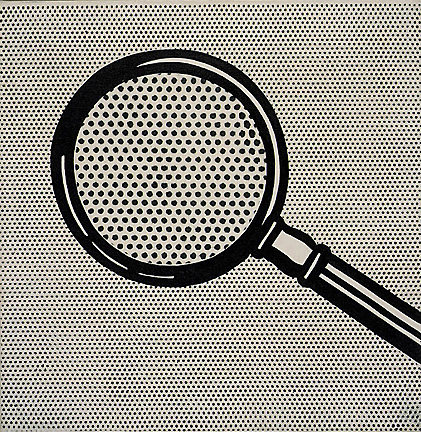Andrew Graham-Dixon on the Pop art of Roy Lichtenstein and Richard Hamilton in Oxford
"WHAT DO you know about my image duplicator?" growled one of Roy Lichten¬stein's earliest cartoon characters. "The Drawings of Roy Lichtenstein" fills you in on the artist's own canny, tongue-in-cheek image-duplication.
Lichtenstein is still best known in this country for his massive, two-panelled icon of the Pop movement, Whaam! (in the Tate Gallery), with its cartoon fighter pilot blasting his adversary into a roseate oblivion of flame. There's nothing quite so spectacular on show at Oxford; instead of the wide-screen, Technicolour produc-tion, the accent is on his preparatory work, on ideas-in-progress and visual in-jokes in the making.
Lichtenstein's first, innovatory joke — on which his entire subsequent career has been based — was his adoption of the Benday dot as the base unit of painting. His art aspired to the look and feel of mass-reproduced imagery; painting (or, as at Oxford, drawing) through a perforated metal sheet, Lichtenstein painstakingly duplicated the myriad screen of dots that make up the image and distinguish the tones in a comic-book picture.
The result was one of modernism's more arresting paradoxes: an art which, laboriously and by hand, mimicked the appearance of machine-generated im¬ages; and one which, while seeming to bring subject matter back into painting, after Abstract Expressionism, also de¬manded that you notice its formal con¬trivance. Lichtenstein was Pop Art's an¬swer to pointillisme.
One of the earliest drawings in the show, / Know How You Must Feel, Brad! — tearful blonde gazes wistfully from window — sets the agenda for around ten years of image-duplication. It's a cheap, corny scene, a comic-book freeze-frame ripped from context and promoted to the status of art-object. It can be hard to recognise — now that Lichtenstein's works have, themselves, taken on the...


